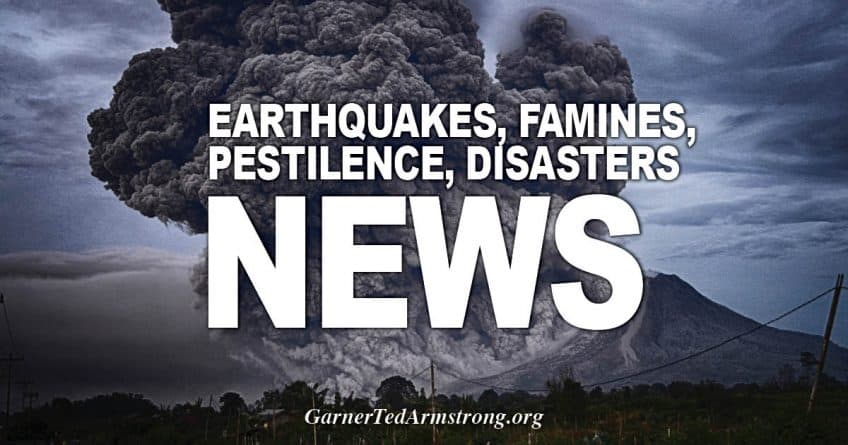More than 10 percent of the country’s population faces restrictions on how often they can leave their homes.
Here’s what you need to know:
–Half of China’s population is facing new travel restrictions.
–Japan says 500 people will be released from cruise ship after more cases confirmed.
–Britain prepares to evacuate citizens from cruise ships.
–The new virus is deadlier than the one that causes the flu.
–The director of a hospital in Wuhan has died from the virus.

Credit…Gilles Sabrie for The New York Times
Half of China’s population is facing new travel restrictions.
Across China, officials have imposed controls of various kinds on people’s movements, hoping that minimizing contact will prevent the virus from circulating further.
To gauge the scale and breadth of these policies, The New York Times examined dozens of local government announcements and reports from state-run news outlets.
The Times’s analysis found that at least 150 million people in China — over 10 percent of the country’s population — are facing government restrictions about how often they can leave their homes.
They represent a subset of the more than 760 million people in China whose neighborhoods and villages have imposed strictures of some sort on residents’ comings and goings, as The Times reported over the weekend. That larger figure represents more than half of the country’s population, and roughly one in 10 people on the planet.
China’s lockdowns vary widely in their strictness. Neighborhoods in some places require residents only to show ID, sign in and have their temperature checked when they enter. Others prohibit residents from bringing guests.
But in places with more stringent policies, only one person from each household is allowed to leave their home at a time, and not necessarily every day. Many neighborhoods have issued the equivalent of paper hall passes to ensure that residents comply.
In one district in the city of Xi’an, the authorities have stipulated that residents may leave their homes only once every three days to shop for food and other essentials. They also specify that the shopping may not take longer than two hours.
Tens of millions of other people are living in places where local officials have “encouraged” but not ordered neighborhoods to restrict people’s ability to leave their homes, The Times found.
And with many neighborhoods and localities deciding their own policies on residents’ movements, it is possible that the total number of affected people is even higher still.
Japan says 500 people will be released from cruise ship after more cases confirmed.

Credit…Kyodo News, via Associated Press
About 500 people will be released on Wednesday from a quarantined cruise ship that has been a hot spot of the outbreak, Japan’s health ministry said on Tuesday, but confusion about the release was widespread as officials left many questions unanswered.
The ministry said 2,404 people on the ship had tested negative for the virus, but it did not say how it had decided who would be allowed to leave on Wednesday, or when others might be released. The ship, the Diamond Princess, has been moored off Yokohama since Feb. 4.
Earlier in the day, the ministry announced that 88 additional cases of coronavirus were confirmed on the ship, bringing the total to 542.
Australia plans to repatriate about 200 of its citizens aboard the ship on Wednesday, and other countries have similar plans, but Japanese officials did not say whether any of those people were among the 500 who would be allowed to disembark.
The government did not explain the timing of the release. It coincides with the expiration of a two-week quarantine imposed on the ship, but it was not clear if that was the reason for letting people go.
Some public health experts say that the 14-day isolation period makes sense only if it begins with the most recent infection — in other words, new cases mean a continuing risk of exposure and should restart the quarantine clock.
The Coronavirus Outbreak
-
What do you need to know? Start here.
Updated Feb. 10, 2020
- What is a Coronavirus?
It is a novel virus named for the crown-like spikes that protrude from its surface. The coronavirus can infect both animals and people, and can cause a range of respiratory illnesses from the common cold to more dangerous conditions like Severe Acute Respiratory Syndrome, or SARS. - How contagious is the virus?
According to preliminary research, it seems moderately infectious, similar to SARS, and is possibly transmitted through the air. Scientists have estimated that each infected person could spread it to somewhere between 1.5 and 3.5 people without effective containment measures. - Where has the virus spread?
The virus originated in Wuhan, China, and has sickened tens of thousands of people in China and at least two dozen other countries. - How worried should I be?
While the virus is a serious public health concern, the risk to most people outside China remains very low, and seasonal flu is a more immediate threat. - Who is working to contain the virus?
World Health Organization officials have praised China’s aggressive response to the virus by closing transportation, schools and markets. This week, a team of experts from the W.H.O. arrived in Beijing to offer assistance. - What if I’m traveling?
The United States and Australia are temporarily denying entry to noncitizens who recently traveled to China and several airlines have canceled flights. - How do I keep myself and others safe?
Washing your hands frequently is the most important thing you can do, along with staying at home when you’re sick.
In addition, many infected people have tested negative initially, only to test positive days later, after becoming sick. The Japanese announcement suggested that Japanese people who are released will not be isolated, a decision officials did not explain.
More than 300 Americans were released this week before that period was completed and transported to the United States on two chartered flights. The American passengers who were released were put into 14-day quarantine in the United States. Australia also plans to quarantine people it repatriates.
Britain prepares to evacuate citizens from cruise ship.

The British government is taking steps to evacuate its citizens who have been on the Diamond Princess, the cruise ship docked in Yokohama, Japan, where 542 people have contracted the coronavirus.
Seventy-four British citizens are on the ship, according to the BBC, which said that they are expected to be flown home in the next two or three days. A statement from the Foreign Office on Tuesday suggested that those who have been infected will remain in Japan for treatment.
“Given the conditions on board, we are working to organize a flight back to the U.K. for British nationals on the Diamond Princess as soon as possible,” the Foreign Office said in a statement. “Our staff are contacting British nationals on board to make the necessary arrangements. We urge all those who have not yet responded to get in touch immediately.”
One Briton in particular has been the subject of more attention than most: David Abel, who has been posting updates on Facebook and videos on YouTube while waiting things out in isolation with his wife, Sally.
Mr. Abel said that he and his wife had tested positive for the virus and would be taken to the hospital. But his most recent post on Facebook, suggested that not was all that it seemed.
“Frankly I think this is a setup! We are NOT being taken to a hospital but a hostel,” He wrote. “No phone, no Wi-Fi and no medical facilities. I really am smelling a very big rat here!”
The new virus is deadlier than the one that causes the flu.

Credit…Xiao Yijiu/Xinhua, via Associated Press
An analysis of 44,672 coronavirus patients in China whose diagnoses were confirmed by laboratory testing has found that 1,023 had died by Feb. 11. That’s a fatality rate of 2.3 percent. Figures released on a daily basis suggest the rate has further increased in recent days.
That is far higher than the mortality rate of the seasonal flu, with which the new coronavirus has sometimes been compared. In the United States, flu fatality rates hover around 0.1 percent.
The new analysis was posted online by researchers at the Chinese Center for Disease Control and Prevention.
Over all, about 81 percent of patients with confirmed diagnoses experienced mild illness, the researchers found. Nearly 14 percent had severe cases of COVID-19, the disease caused by the new coronavirus, and about 5 percent had critical illnesses.
Thirty percent of those who died were in their 60s, 30 percent were in their 70s and 20 percent were age 80 or older. Though men and women were roughly equally represented among the confirmed cases, men made up nearly 64 percent of the deaths. Patients with underlying medical conditions, such as cardiovascular disease or diabetes, died at higher rates.
The fatality rate among patients in Hubei Province, the center of China’s outbreak, was more than seven times higher than that of other provinces.
China on Tuesday announced new figures for the outbreak. The number of cases was put at 72,436 — up 1,888 from 70,548 the day before — and the death toll now stands at 1,868, up 98 from 1,770, the authorities said.
Xi Jinping, China’s leader, told Prime Minister Boris Johnson of Britain in a phone call on Tuesday that China was making “visible progress” in containing the epidemic, according to Chinese state media.

Coronavirus Map: Tracking the spread of the Outbreak. The virus has infected more than 73,200 people in China and 25 other countries

Credit…Agence France-Presse — Getty Images
The director of a hospital in Wuhan, the Chinese city at the center of the epidemic, died on Tuesday after contracting the new coronavirus, the latest in a series of medical professionals to be killed in the outbreak.
Liu Zhiming, 51, a neurosurgeon and the director of the Wuchang Hospital in Wuhan, died shortly before 11 a.m. on Tuesday, the Wuhan health commission said.
“From the start of the outbreak, Comrade Liu Zhiming, without regard to his personal safety, led the medical staff of Wuchang Hospital at the front lines of the fight against the epidemic,” the commission said. Dr. Liu “made significant contributions to our city’s fight to prevent and control the novel coronavirus,” it added.
Chinese medical workers at the forefront of the fight against the coronavirus epidemic are often becoming its victims, partly because of government missteps and logistical hurdles. After the virus emerged in Wuhan late last year, city leaders played down its risks, and doctors did not take the strongest precautions.
Last week the Chinese government said that more than 1,700 medical workers had contracted the virus, and six had died.
The death nearly two weeks ago of Li Wenliang, an ophthalmologist who was initially reprimanded for warning medical school classmates about the virus, stirred an outpouring of grief and anger. Dr. Li, 34, has emerged as a symbol of how the authorities controlled information and have moved to stifle online criticism and aggressive reporting on the outbreak.
Stigma surrounding virus impacts communities in Europe.

Credit…Glyn Kirk/Agence France-Presse — Getty Images
With just 42 cases of the coronavirus confirmed in Europe, the continent faces a far less serious outbreak than China, where tens of thousands have contracted the virus. But the people and places associated with the illness have faced outsized stigmatization as a result, and fear over the virus itself is proving contagious.
A British man who tested positive for coronavirus was branded a “super spreader,” his every movement detailed by the local media.
Business plummeted in a French ski resort identified as the scene of several transmissions of the virus.
And after some employees of a German car company were diagnosed with the virus, the children of other workers were turned away from schools, despite negative test results. Tedros Adhanom Ghebreyesus, the director-general of the World Health Organization, warned last weekend of the dangers of letting fear outpace facts.
“We must be guided by solidarity, not stigma,” Dr. Tedros said in a speech at the Munich Security Conference, adding that fear could hamper global efforts to combat the virus. “The greatest enemy we face is not the virus itself; it’s the stigma that turns us against each other.”
CORONAVIRUS AROUND THE WORLDHSBC will cut 35,000 jobs amid virus and protests.

Credit…Anthony Wallace/Agence France-Presse — Getty Images
HSBC, one of Hong Kong’s most important banks, plans to cut 35,000 jobs over the next three years as it struggles to revive a business that has come to depend increasingly on China for growth.
The London-based bank said on Tuesday that it aimed to cut $4.5 billion in costs as it faces headwinds that include the coronavirus outbreak in China and months of political strife in Hong Kong, one of its most important markets.
The coronavirus is causing economic disruptions in Hong Kong and mainland China that could have a negative impact on performance this year, the bank warned. The bank lowered expectations for growth across Asia for this year but added that it expected to see some improvement once the virus was contained. Nearly half of the bank’s revenue comes from Asia.
HSBC shares trading in Hong Kong slumped by more than 3 percent.
It is the latest company to show the impact of a fast-moving virus that has gripped China over recent weeks and led to a near-nationwide economic standstill. While parts of the country are getting back to work, the reopening of business operations for many companies has been slow.
Domestic workers from the Philippines will be permitted to return to Hong Kong.

Credit…Hannah Reyes Morales for The New York Times
The Philippines has lifted its travel ban on citizens employed as domestic workers in Hong Kong and Macau, officials said Tuesday.
The nation had enacted a ban on Feb. 2 on travel to and from mainland China, Hong Kong and Macau, preventing workers from traveling to jobs in those places.
Hong Kong alone is home to about 390,000 migrant domestic workers, many of who are from the Philippines. The travel ban had left many anxious about the sudden loss of income, along with the risk of infection.
Also on Tuesday, the authorities in Hong Kong announced that a 32-year-old Filipino woman was the latest person in Hong Kong to have contracted the virus, bringing the number of confirmed cases to 61.
A spokeswoman for the Department of Health said the woman was a domestic worker who was believed to have been infected at home. The government said that she was working in the home of an older person who was among the previously confirmed cases.
Salvador Panelo, a spokesman for President Rodrigo Duterte of the Philippines, said that workers returning to Hong Kong and Macau would have to “make a written declaration that they know the risk.”
South Korea’s leader warns of a dire impact on economy.

Credit…Ed Jones/Agence France-Presse — Getty Images
President Moon Jae-in of South Korea warned on Tuesday that the outbreak of the coronavirus in China, his country’s biggest trading partner, is creating an “emergency economic situation,” and ordered his government to take actions to limit the fallout.
“The current situation is much worse than we had thought,” Mr. Moon said during a Cabinet meeting on Tuesday. “If the Chinese economic situation aggravates, we will be one of the hardest-hit countries.”
Mr. Moon cited difficulties for South Korean companies in getting components from China, as well as sharp drops in exports to China, the destination for about a quarter of all South Korean exports. He also said travel restrictions hurt the South Korean tourism industry, which relies heavily on Chinese visitors.
“The government needs to take all special measures it can,” Mr. Moon said, ordering the allocation of financial aid and tax breaks to help shore up businesses hurt the most by the virus scare.
Also on Tuesday, a South Korean Air Force plane flew to Japan to evacuate four South Korean citizens stranded on the Diamond Princess, the quarantined cruise ship in Yokohama.
Cruise ship passengers blocked from leaving Cambodia.

Credit…Tang Chhin Sothy/Agence France-Presse — Getty Images
Passengers from a cruise ship were turned away at an airport as they tried to leave Cambodia on Tuesday, amid fears that the country had been too lax in containing the new coronavirus.
The ship, the Westerdam, was turned away from five other ports over virus fears, but Cambodia allowed it to dock last Thursday. Prime Minister Hun Sen and other officials greeted and embraced passengers without wearing protective gear.
More than 1,000 people were allowed to disembark without wearing masks or being tested for the virus. Other countries have been far more cautious; it is not clear how long after infection people develop symptoms, and some people at first test negative for the virus, even after becoming sick.
Hundreds of passengers left Cambodia and others traveled to Phnom Penh, the capital, to wait for flights home.
But on Saturday, an American who left the ship tested positive on arrival in Malaysia. Health experts warned that others could have carried the virus from the ship, and passengers were barred from flights out of Cambodia.
THE PORT THAT SAID YESCambodia’s prime minister may have acted rashly in allowing cruise ship passengers to disembark.On Monday, Cambodian officials said tests had cleared 406 passengers, and they looked forward to heading home to the United States, Europe and elsewhere.
On Tuesday morning, Mr. Hun Sen announced that passengers who were waiting in a hotel would be allowed home on flights through Dubai and Japan.
Orlando Ashford, the president of the cruise operator Holland America, who had traveled to Phnom Penh, told anxious passengers to keep their bags packed.
“Fingers crossed,” said Christina Kerby, an American who had boarded the ship in Hong Kong on Feb. 1 and was awaiting approval to depart. “We’ve been cheering as individuals begin to head to the airport.”
But a cohort of passengers who went to the airport later returned to their hotel. It was not clear if any passengers had been able to fly out.
“New fly in the ointment, the countries that the flights have to go through are not allowing us to fly,” Pad Rao, a retired American surgeon, wrote in a message sent from the Westerdam, where about 1,000 crew and passengers remain.
He said he had been tested for the virus on Monday and was awaiting results.
“We need all the help we can get!” he added.
Reporting and research were contributed by Austin Ramzy, Isabella Kwai, Alexandra Stevenson, Hannah Beech, Choe Sang-Hun, Raymond Zhong, Lin Qiqing, Wang Yiwei, Elaine Yu, Roni Caryn Rabin, Richard C. Paddock, Motoko Rich, Daisuke Wakabayashi, Megan Specia, Michael Wolgelenter, Richard Pérez-Peña and Michael Corkery.
- What is a Coronavirus?








